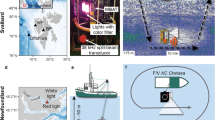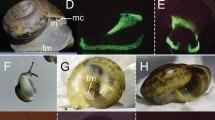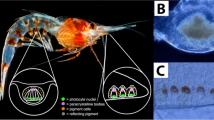Abstract
THE large group of pelagic ‘squids’ known as the Egopsida, which includes the greatest number of families of living cephalopods, is characterised by the frequent occurrence of light-organs situated in a variety of places both on the outer surface and within the mantle-cavity. The Myopsida (which include the true squids (Loligo) and cuttlefish (Sepia)), on the other hand, are poor in luminous species. Dr. S. S. Berry in his recent survey of the occurrence of luminous organs in Cephalopoda (Biological Bulletin, 38, 1920, pp. 141 and 171) lists 99 luminescent species of Egopsida (57 per cent.), 27 of Myopsida (12 per cent.) and 2 of Octopoda (1 per cent.). We cannot believe that these organs are necessarily correlated with the habit of living permanently in, or periodically descending to, great depths. Many of the Octopoda are permanent inhabitants of the deeper layers of the sea and are yet devoid of luminous organs. There may be some special source of correlation between the occurrence of light-organs and abyssal habitat which may be responsible for the occurrence of the former among the Egopsida, but not among the Octopoda. Of this we have no certain evidence at present.
This is a preview of subscription content, access via your institution
Access options
Subscribe to this journal
Receive 51 print issues and online access
$199.00 per year
only $3.90 per issue
Buy this article
- Purchase on Springer Link
- Instant access to full article PDF
Prices may be subject to local taxes which are calculated during checkout
Similar content being viewed by others
Author information
Authors and Affiliations
Rights and permissions
About this article
Cite this article
ROBSON, G. Light-Organs in Littoral Cephalopoda. Nature 118, 554–555 (1926). https://doi.org/10.1038/118554a0
Issue Date:
DOI: https://doi.org/10.1038/118554a0
Comments
By submitting a comment you agree to abide by our Terms and Community Guidelines. If you find something abusive or that does not comply with our terms or guidelines please flag it as inappropriate.



